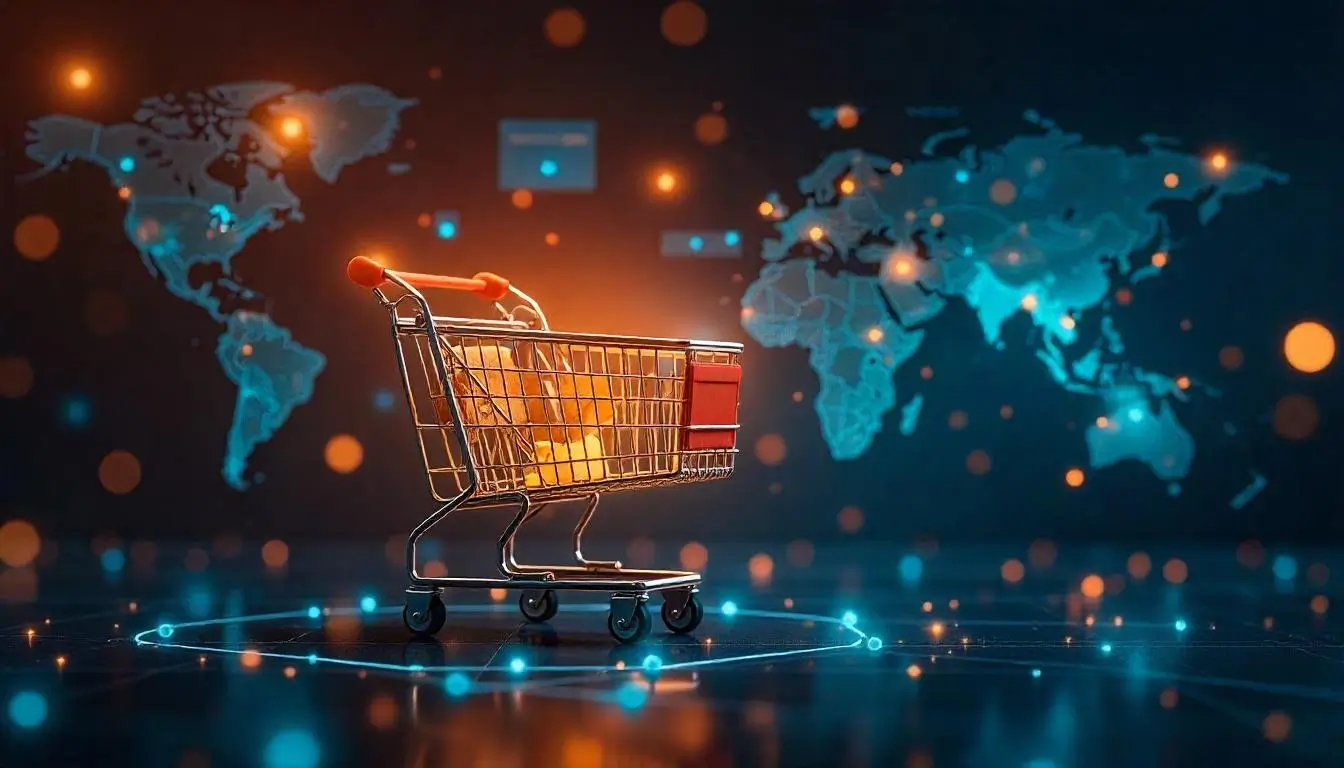Introduction
The rise of electronic commerce (e-commerce) has transformed the way businesses operate. With the rapid advancement of technology, online shopping has become a dominant force in the global economy. Businesses of all sizes are leveraging e-commerce to reach a broader audience, increase sales, and improve customer experiences.
In this article, we explore the growth of e-commerce, its impact on businesses, the challenges it presents, and what the future holds for online commerce.
1. The Growth of Electronic Commerce
E-commerce has seen exponential growth over the past decade. Key factors driving this rise include:
- Internet accessibility: More people have access to the internet than ever before.
- Mobile commerce (m-commerce): Shopping via smartphones has become the norm.
- Convenience and speed: Consumers prefer fast, hassle-free online transactions.
- Improved payment solutions: Digital wallets, BNPL (Buy Now, Pay Later), and cryptocurrency are gaining popularity.
- COVID-19 acceleration: The pandemic forced businesses to shift online, increasing e-commerce adoption.
Statistics on E-Commerce Growth:
- Global e-commerce sales are projected to reach $7.5 trillion by 2025.
- Mobile commerce accounts for 73% of total e-commerce sales.
- Over 80% of consumers research products online before making a purchase.
2. How E-Commerce is Impacting Businesses
1. Increased Market Reach
E-commerce eliminates geographical barriers, allowing businesses to:
- Expand internationally without opening physical stores.
- Reach niche markets and target specific demographics.
- Operate 24/7 without time zone limitations.
2. Lower Operational Costs
Compared to traditional retail, e-commerce businesses save on:
- Rent and utilities (no need for physical storefronts).
- Staffing costs (automation and self-service checkout reduce workforce needs).
- Inventory management (dropshipping and fulfillment centers minimize stock holding costs).
3. Enhanced Customer Experience
E-commerce provides personalized shopping experiences with:
- AI-driven product recommendations.
- 24/7 chatbots and automated customer support.
- Faster delivery with same-day and next-day shipping.
4. Increased Competition
While e-commerce offers many benefits, it also increases competition:
- Businesses must differentiate their brand to stand out.
- Price wars and aggressive marketing are common.
- Consumer expectations for fast shipping and seamless service are rising.
3. Challenges of Electronic Commerce
Despite its advantages, e-commerce presents several challenges for businesses:
1. Cybersecurity Threats
- Data breaches, phishing attacks, and online fraud are major concerns.
- Businesses must invest in strong cybersecurity measures.
2. Logistics and Supply Chain Issues
- Managing inventory, fulfillment, and last-mile delivery can be complex.
- Shipping delays can lead to customer dissatisfaction.
3. Customer Trust and Retention
- Online shoppers are cautious about fraud and low-quality products.
- Businesses must build trust through reviews, transparent policies, and secure payments.
4. Regulations and Compliance
- E-commerce businesses must comply with data protection laws (GDPR, CCPA).
- Taxation and international trade regulations can be complex.
4. The Future of E-Commerce
As technology evolves, e-commerce will continue to transform. Here are some key future trends:
1. AI and Automation
- AI-driven chatbots and virtual assistants for better customer service.
- Automated warehouses and drone deliveries for faster logistics.
2. Voice and Visual Commerce
- Voice assistants (Alexa, Google Assistant) enable hands-free shopping.
- Visual search allows users to search for products using images.
3. Augmented Reality (AR) Shopping
- Virtual try-ons for clothing, accessories, and home décor.
- AR-powered product visualization boosts confidence in purchases.
4. Blockchain and Cryptocurrency Payments
- Secure, transparent transactions with blockchain technology.
- More e-commerce platforms accepting Bitcoin and other cryptocurrencies.
5. Sustainable E-Commerce
- Eco-friendly packaging and carbon-neutral shipping.
- Rise of second-hand and refurbished goods marketplaces.
FAQs About E-Commerce and Its Impact on Businesses
1. Why is e-commerce growing so fast?
The combination of internet accessibility, mobile shopping, and digital payments has fueled rapid e-commerce growth.
2. How does e-commerce help small businesses?
E-commerce allows small businesses to reach a global audience, reduce operational costs, and compete with larger brands.
3. What are the biggest challenges of running an e-commerce business?
Cybersecurity threats, logistics management, customer trust, and regulatory compliance are major challenges.
4. How will AI impact e-commerce in the future?
AI will enhance personalization, automate customer service, and optimize supply chain management.
5. Is traditional retail dying because of e-commerce?
While traditional retail is changing, omnichannel strategies (combining online and offline shopping) are helping physical stores stay relevant.
Conclusion
The rise of electronic commerce (e-commerce) has revolutionized the way businesses operate. From expanding market reach to reducing costs and improving customer experiences, e-commerce offers countless advantages. However, businesses must also navigate challenges like cybersecurity, competition, and logistics.
Looking ahead, AI, automation, AR, and sustainability will shape the future of e-commerce. To stay ahead, businesses must adapt to new technologies and evolving consumer expectations.
Are you ready to embrace the future of e-commerce? Stay updated with the latest trends and innovations to keep your business competitive in the digital marketplace!
- Is It Safe to Buy from Ulta Online? Exploring If Ulta Beauty is Legit in 2025
- Is Ecommerce Profitable: A Complete Guide for 2025
- Top eCommerce SEO Packages for 2025: Boost Your Online Store's Visibility
- Top AI Tools for Ecommerce in 2025
- How AI Is Revolutionizing Ecommerce in 2025
- Taobao vs. Alibaba: Which One is Right for You?
- Shopify Website Builder vs Competitors: Which One Wins?
- My Shopify Website Builder Journey: Building My Dream Store in 2025! 🚀
- Understanding Shopify 1099-K Tax Forms for 2025
- Shopify 1099-K: What Sellers Need to Know
- RaveDigitalAgency: Top Shopify eCommerce Agency for Your Store
- Best Shopify Dropshipping Tips for Beginners
- How to Start a Shopify Dropshipping Business in 2025
- Grow Your Business with Shopify eCommerce Experts at RaveDigitalAgency
- Why RaveDigitalAgency is the Best Shopify eCommerce Agency
- PSG eCommerce Grant: Boost Your Online Business Today
- How to Apply for the PSG eCommerce Grant in 2025
- How to Build an eCommerce Website: A Beginner’s Guide
- Top Reasons to Build Your eCommerce Website with Shopify
- Best B2B eCommerce Solutions for Growing Businesses
- Electronic Commerce (E-Commerce): A Beginner’s Guide to Online Selling
- The Rise of Electronic Commerce (E-Commerce) and Its Impact on Businesses
- Electronic Commerce (E-Commerce): Key Trends Shaping the Industry
- Electronic Commerce vs. Traditional Commerce: Why E-Commerce Wins
- How Electronic Commerce (E-Commerce) is Transforming Retail in 2025
- Electronic Commerce (E-Commerce): The Future of Online Business
- Top 10 eCommerce Web Design Agencies in 2025: Who’s Leading the Game?
- DHL eCommerce Customer Service: How to Get Fast Support in 2025
- Top Ecommerce Website Builders: Launch Your Store in Minutes
- Best Tools for Building an Ecommerce Website in 2025


